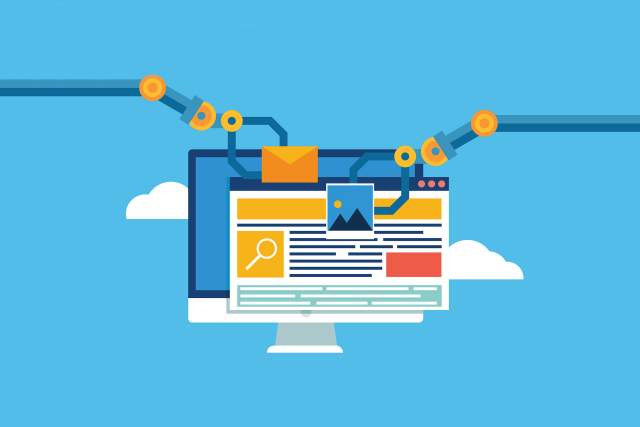Tired of manually sending out emails and trying to keep up with your growing subscriber list? It's time to unleash the power of automation and create a comprehensive email marketing strategy that will take your campaigns to the next level.
Steps to Improve Your Email Marketing Strategy
Step 1: Identify Your Goals
The first step in creating an email marketing automation strategy is to identify your goals. What do you want to achieve with your campaigns? Are you looking to increase sales, improve engagement, promote your destination, or a new offering?
Now, once you've identified your goals, you’ll be able to move forward with creating a plan to achieve them.
Step 2: Map Out Your Customer Journey
Next, you'll need to map out your customer journey, which helps you understand your customer’s needs and motivations at each stage of their journey so that you can create targeted messaging and automation workflows that help to guide them towards conversion and loyalty.
This means identifying the different stages of your customer's journey, which will help you deliver the right message at the right time, and increase the likelihood of those conversions.
Here is an example of a customer journey map:
Stage 1: Awareness
This is where the customer becomes aware of your brand, destination, product or service. They may have come across your website through search engines, social media, advertising, or even word of mouth. Your goal at this stage is to capture their attention and introduce them to your brand.
Stage 2: Consideration
In this stage, the customer is considering whether or not to book with you, make a purchase from you or even subscribe to your newsletters. They may be researching your convention center, hotels, comparing prices, or reading reviews. Your goal at this stage is to provide them with the information they need to make an informed decision and convince them that you’re the best choice.
Stage 3: Conversion
This is where the customer decides to subscribe, book, or make a purchase. Your goal at this stage is to make the process as easy and smooth as possible. This includes offering multiple booking options, payment options, providing clear instructions, and sending confirmation emails.
Stage 4: Post-Conversion
The customer, at this point, has completed a form, subscribed to your newsletter, made a booking or purchase, and is now converted. Your goal at this stage is to keep them engaged and happy. This includes sending follow-up emails, providing customer support, and asking for feedback or reviews.
Stage 5: Loyalty
In this stage, the customer has become a loyal fan of your brand. Your goal at this stage is to maintain their loyalty and turn them into brand ambassadors. This includes sending exclusive offers, providing personalized recommendations, and creating a community around your brand.

Step 3: Create a Content Plan
To create effective email marketing automation campaigns, you need to have great content. This means creating a content plan that includes relevant, engaging, and valuable content for your subscribers. Think about what your audience wants and needs, and create content that will help them solve their problems or achieve their goals.
Here's an example of a content plan:
Month 1: Welcome and Introduction
- Welcome email introducing your brand and what subscribers can expect from your emails
- Blog post on "10 Reasons Why You Should Choose Us"
Month 2: Education and Engagement
- Email series on the benefits and value
- Blog post on "How to Book for Maximum Results"
Month 3: Promotion and Conversion
- Email campaign promoting a limited-time discount or offer
- Blog post on "Customer Success Stories: How You Helped Solve Real Problems"
Month 4: Personalization and Relationship Building
- A personalized email with recommendations based on subscriber behavior
- Blog post on "Behind the Scenes: Meet Our Team and Our Mission"
Month 5: Nurturing and Retention
- Email series with tips and tricks on how to get the most out of your destination, product, or service
- Blog post on "Our Commitment to Customer Satisfaction: How We Go Above and Beyond"
Step 4: Set Up Automation Workflows
This means creating a series of automated emails that are triggered based on specific actions or behaviors, such as signing up for your newsletter, abandoning an RFP, booking, etc. You will use your customer journey map and content plan to guide the creation of these workflows, and test and optimize them over time for maximum effectiveness, as well as review data regularly to see if you need to change up your strategy.
By following these four steps, you can create a comprehensive email marketing automation strategy that will help you achieve your goals, deliver the right message at the right time, and engage your subscribers on a deeper level. We don't want you to let manual email sending hold you back, so unleash the power of automation and take your email marketing to the next level. And, if you’re unsure of where to start, reach out to one of our Marketing Automation team experts and we’re happy to offer guidance and/or set you up with a service tailored to your goals to get these up and running for you.
Want to dive deeper into automation best practices? Read this case study to learn how Traverse City utilized Managed Services to improve its email marketing.
Unleash the Power of Automation
Interested in finding out how Simpleview Marketing Automation Managed Services can empower your DMO?
Let's talk
